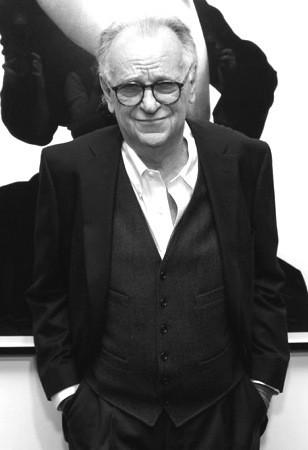
Gerard Pipart
About
Gerard Pipart was born in Paris, France, in 1933. At the age of 16, he began working for Pierre BALMAIN. He also worked for Jacque FATH, GIVENCHY, Jean PATOU and Marc BOHAN. In 1961 he joined Chloe for a brief stay.
After completing his military service, he spent a short period as a freelance designer before being appointed in 1963 as chief designer at Nina RICCI where he continued the house's style of sophisticated clothes for all occasions until his retirement in 1999.
The Look
Pipart creates simple Parisian chic rather than chasing seasonal trends. He is also true to the tradition of maintaining the 'house' style. He never learned to cut fabric, so he works from precise drawings and making amendments straight into the toiles. His style is one of conservative elegant beauty. Before the age of 30, Gérard Pipart had become the most vital women's ready-to-wear designer in Paris. His clothes were already great sellers abroad. He made his mark with snappy, colorful sportswear, well-tailored, detailed, and with a deceptively casual simplicity that only good seams and a fine cut can guarantee. He became known for his inspired use of fabrics, as he skillfully manipulated every material he chose into amusing, wearable chic. His couture collections have included elegant daytime wear, sumptuous coats, extravagant evening looks, furs, and bridal wear. Early collections focused on supple lines and a fit close to the body without being overly confining, and his clothes were praised as "never, never too haute." Later collections investigated the long, languid lines of the bias-cut dress, played with loose, theatrical capes, feminized the culotte for daytime wear, and toyed with 1940s and 1950s retro looks. His penchant for no-holds-barred glamor can be seen in evening dresses of frothy chiffon and bright, opulent taffeta, long-waisted and cinched, with high trumpet sleeves and luxuriant folds billowing to the floor, or exquisite embroideries requiring hundreds of hours of work. He dared to defy the "bride wore white" norm with his design for a Provençal-printed, multicolored mélange of a bridal dress, wrapped at the waist with a wide cummerbund, topped with a short jacket splashed with rhinestones. Fur trim, feathered hats, ruffles, lace, long gloves—Pipart has never shied away from a certain feminine, Parisian elegance in his designs and use of accessories. His 1990s collections included bright, crisp cruise wear, including short skirts and swimsuits with matching floor-length skirts in shades of hot orange, fuschia, and kelly green. Fabrics ranged from cotton pique and satin to embroidered linen and cotton jersey, affording comfortable and cheerful warm-weather looks. Other collections have highlighted pleats, with pastel skirts under pleated safari jackets for day and long iridescent taffeta dresses for evening. Pipart also received praise for his white linen suits and two-toned, draped crepe dresses.